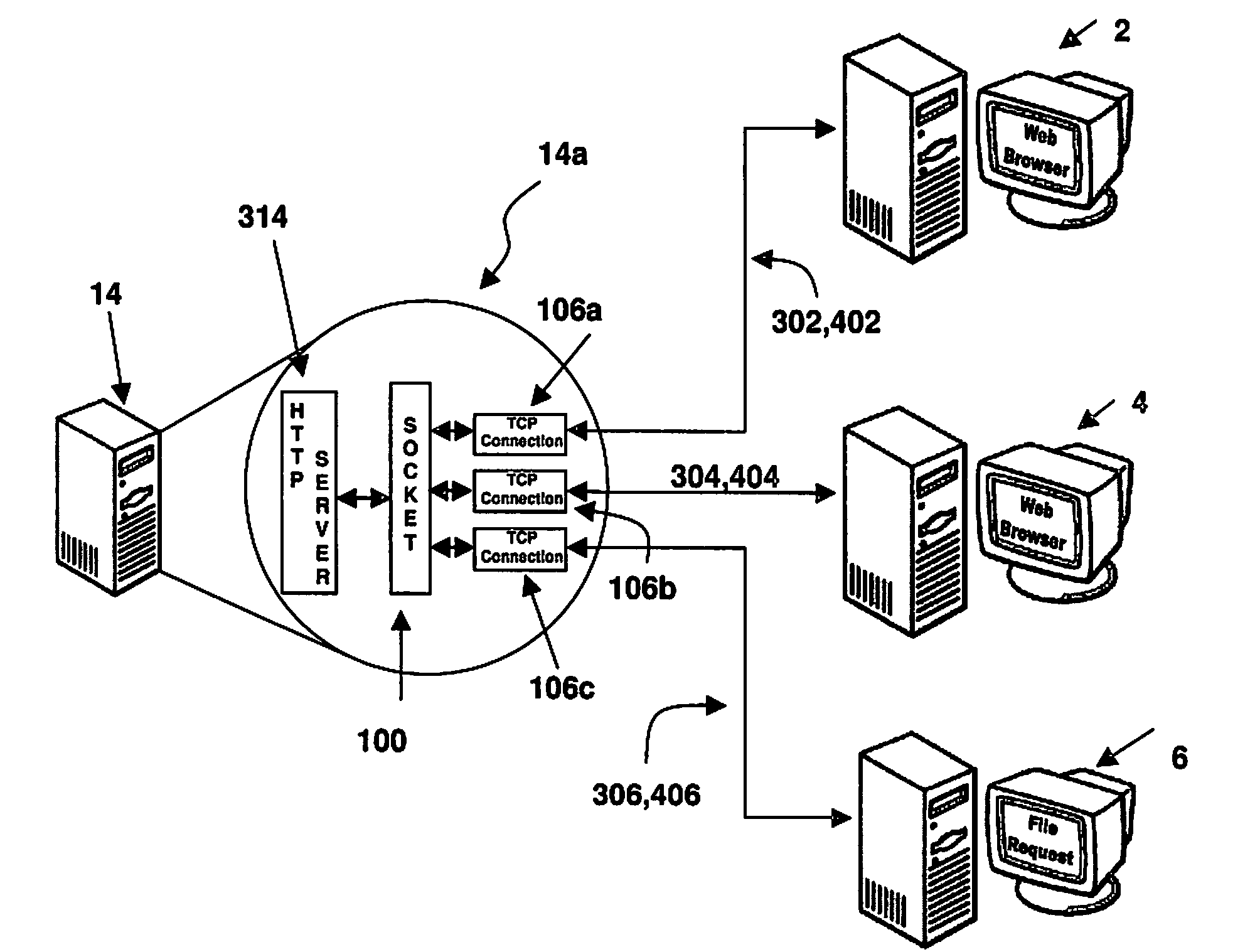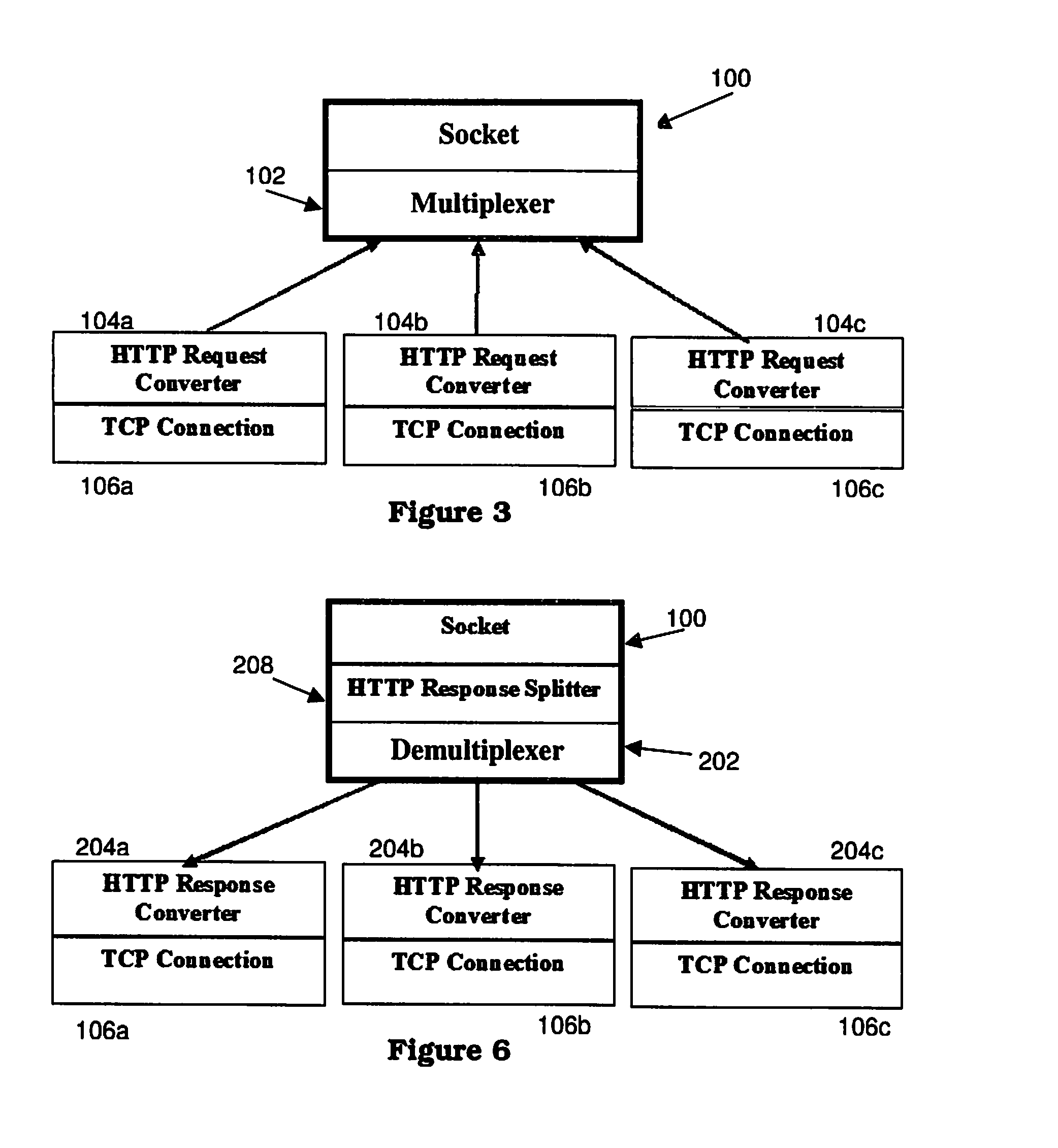Multiplexing Multiple Client Connections in a Single Socket
a multi-client, multi-client technology, applied in the field of communication of data, can solve the problems of consuming considerable server memory resources, cpu intensive establishment of sockets and connections, and inability to create a new tcp socket for an inbound tcp connection, so as to increase the workload capacity of the server, reduce the overall cost, and add the effect of effort and complexity
- Summary
- Abstract
- Description
- Claims
- Application Information
AI Technical Summary
Benefits of technology
Problems solved by technology
Method used
Image
Examples
Embodiment Construction
[0027]The embodiments described hereinafter utilize a method for multiplexing multiple client requests for multiple data connections in a single socket to a server. The server processes the requests without being encumbered by the additional overhead associated with each connection having its own socket. A server can be any device that connects with multiple devices to communicate data. Situations where this might be applicable are web server applications where servers are receiving a continued stream of client requests for data. Servers may also execute client applications that require data or information from another server. Here the server executing the client application becomes a client to a new server. A server can be both a server and client simultaneously as well, when the client application executing on the server requires data from a server application that is also executing on the same or different server.
Hardware and Software Environment
[0028]Turning to the drawings, whe...
PUM
 Login to View More
Login to View More Abstract
Description
Claims
Application Information
 Login to View More
Login to View More - R&D
- Intellectual Property
- Life Sciences
- Materials
- Tech Scout
- Unparalleled Data Quality
- Higher Quality Content
- 60% Fewer Hallucinations
Browse by: Latest US Patents, China's latest patents, Technical Efficacy Thesaurus, Application Domain, Technology Topic, Popular Technical Reports.
© 2025 PatSnap. All rights reserved.Legal|Privacy policy|Modern Slavery Act Transparency Statement|Sitemap|About US| Contact US: help@patsnap.com



